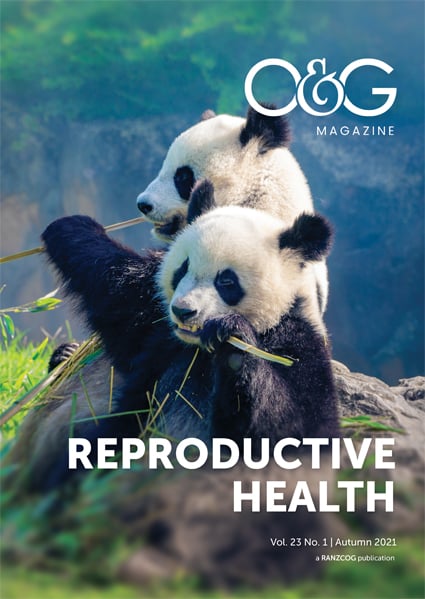Why I now grocery shop online and other challenges of providing fertility services in rural and remote Australia
One Sunday afternoon, I decided to pop into the local supermarket to pick up a few groceries for the week. I stood in the aisle trying to decide which coffee to buy when I noticed, out of the corner of my eye a pregnant lady and who I presumed was her husband, coming down the aisle. Being a small town, I wondered if she was one of my patients, but soon went back to trying to decide between coffee bags or pods. As they got closer, I went to move out of their trolley’s way when, with a smirk and at the top of his voice, her husband announced, ‘Oh look honey, there’s the man who got you pregnant!’ The surrounding other shoppers and staff looked towards me with horror. I quickly went bright red, realising I would have to shop online from now on. I had also discovered another challenge of providing fertility services in rural and remote Australia!
Rural women and their families face significant multifactorial challenges in accessing and undertaking fertility treatments. There can also be challenges for rural specialists in trying to balance access and risk in providing such services locally. A literature review failed to find any significant research into this area, but there have been a number of recent media articles detailing personal stories of remote women and the challenges they faced in accessing fertility services. For some rural women and their families, these additional challenges have been so great that they have been unable to proceed with fertility treatment. These challenges can be even more prohibitive for Aboriginal women living in remote communities who don’t have easy access to the most basic of fertility services. In this article, we discuss the challenges of accessing and providing fertility treatments for rural and remote women and develop some recommendations to try and reduce this access inequality.
Access to testing
Fertility tests often seen as routine in metropolitan areas can be difficult to access and time in rural areas. In many remote regions, even taking blood tests can be challenging with phlebotomy services only available weekly or fortnightly when a doctor or nurse is visiting. Any time-sensitive tests can also be difficult as often bloods will need to travel for over 24 hours until they arrive at the laboratory.
Sometimes, other advanced testing is not available locally and would require the patient to travel or consider more invasive options. An example of this are tests for tubal patency such as hysteron-salpingo contrast sonography (HyCoSy) or hysterosalpingogram (HSG). Rather than travelling, some patients elect to have a ‘lap and dye’, which has the added risks of general anaesthesia and laparoscopy. With the need to be in the first part of the cycle, trying to time flights and ultrasounds adds another challenge.
For the male, a routine semen analysis can also be difficult to access. In Western Australia, this service is not available north of Perth and travel associated with having the test is not covered by the patient travel assistance scheme. Therefore, to undertake an analysis will require at least two to three days of travel, added flight costs often in excess of $1000, and time off work and away from family. Testing is frequently opportunistic such as when if the patient is travelling to a metropolitan area for work.
Access to monitoring
Many fertility treatments require intensive monitoring that can be difficult to predict and plan. This can be challenging in rural areas with services such as ultrasound only visiting intermittently and with a long waitlist. Some blood tests may also need to travel to larger laboratories, leading to a delay in receiving and acting on results. Many towns are serviced only by visiting specialists who are therefore unable to provide day-to-day hands-on monitoring
Access to advanced treatments
Most advanced fertility services are confined to larger regional towns and cities, due to the required laboratories and other support services. To access these facilities, rural women and their partners often have to spend extended periods away from home, which adds further costs and stressors. While there are patient travel assistance schemes to help offset these travel costs, they seldom cover all costs, especially if needing to stay in a hotel or other accommodation. For the male, only their travel to the first and second appointment is covered, meaning they will need to self-fund costs if they want to accompany their partner on further appointments and procedures. There are also added costs of taking leave from work or businesses and organising care for other family members and dependants left at home. With these added costs, more and more rural patients are applying to access their superannuation to pay for fertility services, a practice that has financial implications later in life.
Added medical risks
For rural doctors providing fertility services, it can be challenging to balance risks with trying to provide treatment close to home for these rural women. An example of this can include whether you should start ovulation induction or perform a diagnostic laparoscopy prior to accessing a semen analysis for the partner. Often the ability to monitor patients through blood tests and ultrasounds are limited and this may increase the risk of higher order pregnancies.
Patients may elect to have treatments that are not evidence based, as they are unable to afford or access more of the considered standard care. Examples from my personal practice include carrying out more ovarian drilling in rural areas compared to my practice in the city, or persisting with ovulation induction for much longer periods in rural areas rather than progressing to IVF. Doctors may also advise rural patients to proceed straight to IVF in many circumstances rather than IUI or ovulation induction as this is overall easier to provide.
Added challenges for Aboriginal women
I visit a number of very remote Aboriginal communities and the infertility rates are higher than expected. The main causes appear to be anovulatory cycles with high rates of polycystic ovary syndrome and tubal factors from pelvic inflammatory disease. The women present very young after trying to fall pregnant for a number of years and describe ‘big shame’ regarding their infertility. Providing fertility treatment can be very challenging. Blood tests may only be able to be taken once a week when the ‘mail plane comes’ and patients then need to travel for all other tests. It can be very challenging to involve the male partner as the infertility is seen only as a ‘women’s problem.’ With high rates of smoking and excess alcohol use, it could be argued that there often may be a male factor as well. With limited health education, ovulation induction can also be extremely high risk in these communities, compounded by the limited opportunities for monitoring its progress. With the high rates of tubal disease many women also require IVF to treat their infertility. The majority however do not proceed due to the direct and indirect costs, as well as lack of partner cooperation or involvement in the process. These women present year after year, but there is ultimately little we can offer them in these situations, which can be very distressing for both the patient and doctor.
Reducing access inequalities
Many IVF services are very accommodating and supportive of rural patients and the added challenges they face. Ways in which these access challenges can be further addressed include:
- Expanded use of telehealth for initial appointments
- Fertility units developing relationships with rural ultrasound and pathology providers to allow patients to stay locally as long as possible with cycle tracking and other treatments
- Use of rural general O&G specialists with support and advice to carry out as much treatment as possible in rural areas
- Advocacy for further funding for rural patients to help offset indirect costs of travelling for fertility services
- Culturally appropriate fertility services that encompass education and support for Aboriginal patients, including accommodation and travel support.
Hopefully with ongoing technological advances, we will be able to see more and more fertility treatments available in small to medium size towns, which will further allow more rural women and their families access to investigations and treatment closer to home.





Leave a Reply